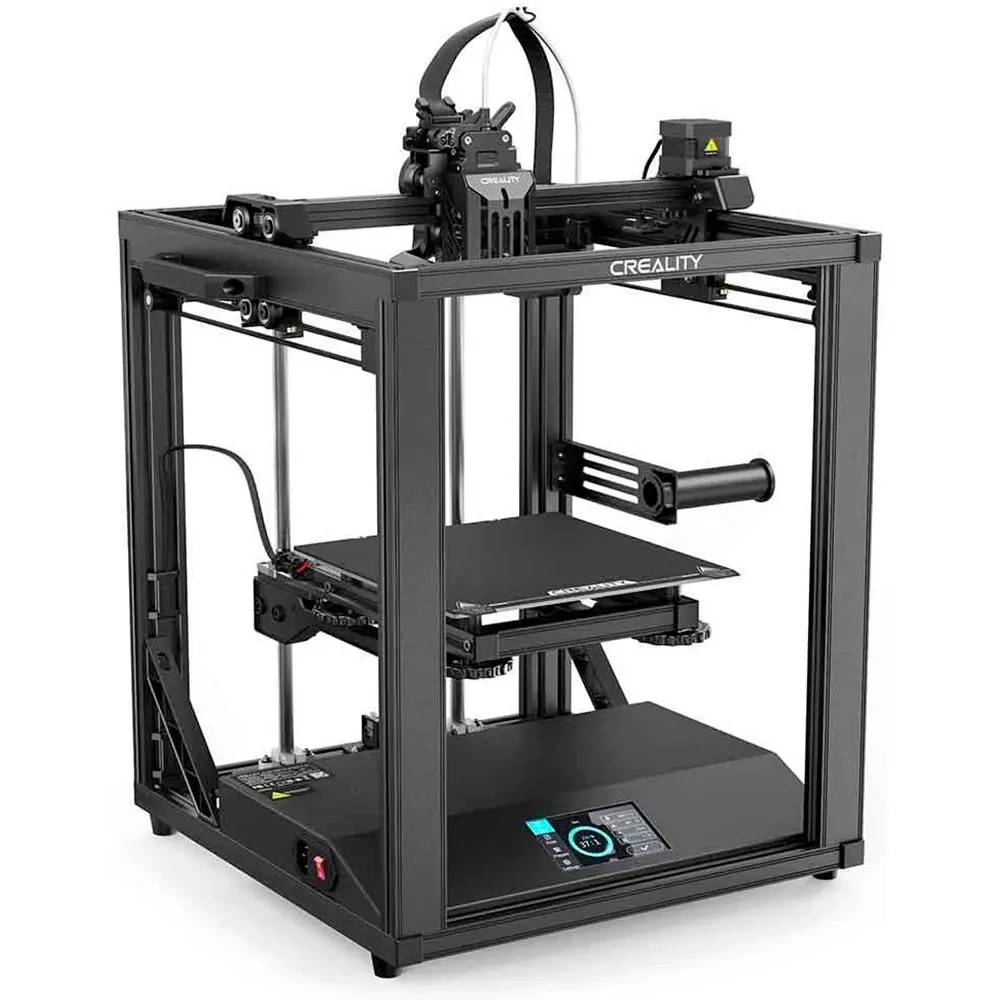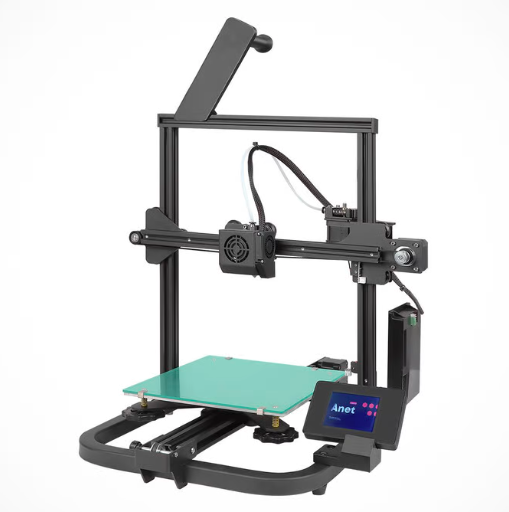Compare Ender 5 S1 vs A8 V2
Comparison between the best 3D printers
Choose the best 3D printer at the best price. The cheapest 3D printers are here.
Buy a 3D printer here with 3D Fila.
 |
 |
|
| Model | Ender 5 S1 |
A8 V2 |
| Printing Material | Filament | Filament |
| Buy Filament for Creality 3D Ender 5 S1 | Buy Filament forAnet A8 V2 | |
| Estimated price | $467,00 | $129,00 |
| Manufacturer | Creality 3D | Anet |
| Release Year | 2022 | 2021 |
| Print Volume [mm] | 220x220x280 | 220x220x250 |
| Printer Size [mm] | 425x460x570 | 428x441x486 |
| Weight [kg] | 12,1 | 6,2 |
| Power Loss Recovery | YES | NO |
| Enclosed printer | NO | NO |
| Bed Leveling | Automatic | Manual |
| Filament End Sensor | YES | NO |
| Bed type | Heated | |
| Power supply system | Direct Drive | Bowden |
| Standard nozzle | 0,4 | 0,4 |
| Maximum Nozzle Temperature [°C] | 300 | 230 |
| Maximum Bed Temperature [°C] | 110 | |
| Maximum printing speed [mm/s] | 250 | 150 |
| Filament holder | YES | YES |
| Camera for supervision | NO | NO |
| Recommended filaments | PLA, ABS, PETG, TPU, PC, ASA, HIPS | PLA |
| Recommended slicers | Cura, Simplify, Slic3r, IdeaMaker | Cura, Simplify, Slic3r, IdeaMaker |
| Maximum Resolution [mm] | 0,05 | 0,1 |
| Processor | 32 Bits | |
| Display | Display touchscreen 4,3 '' | Display touchscreen 2,8'' |
| Power Supply | 350 W | 110/220V / 250W |
| Connectivity | SD / USB / Wi-Fi | SD / USB |
| Operating systems | Windows, Mac, Linux | Windows, Mac, Linux |
| Date of registration in the system | 2023-10-04 | 2022-11-10 |
| Release date | 2022 | 2021 |
| Extra features | A steel drive shaft synchronizes the two Y-axis belts. High-torque 42-48 Y-axis motor for responsive and precise movement. Cartesian structure. Enhanced stability by thick linear shafts, extra stiffeners, two cantilevers, and silicone bumpers. Double Die Spring profile reinforcement. Silicone bed support. All-metal Sprite direct extruder. Best for printing with flexible filaments like TPU. Auto-calibration with 16-point CR Touch. Compatible with Sonic Pad, Wifi Box, and Camera kit. | The Anet A8 V2 is a Cartesian-XZ type 3D printer with a build volume of 220 x 220 x 250 mm, Ender 3 design and V-slot assembly. It has a 32-bit motherboard and touchscreen interface, promising ease of use. It uses open source firmware and has thermal failure protection. It stands out for its cable organization and the absence of a heated bed, focusing on energy savings and PLA printing. It comes with an external power adapter, aiming at greater safety, especially for beginners and educational use. |
| Support for multiple colors and materials (AMS and CFS) | NO | NO |
Notes * |
||
| Cost-benefit | 7 / 10 | 6 / 10 |
| Hardware | 2.4 / 10 | 0.5 / 10 |
| Tela | . | . |
| Print volume | 3 / 10 | 3 / 10 |
| Performance | 2 / 10 | 1 / 10 |
Conclusion |
| In comparing the Ender 5 S1 and the Anet A8 V2, it is evident that both 3D printers cater to different user needs and preferences, reflecting their respective price points. The Ender 5 S1, while more expensive, offers a range of advanced features, including automatic bed leveling, a heated bed, and a robust build volume. It supports a wider variety of materials and has a higher maximum nozzle temperature, making it suitable for more complex printing tasks. Additionally, its power loss recovery and filament end sensor are invaluable for uninterrupted printing, which is particularly useful for users engaged in longer projects. The modern touchscreen display and superior print speed enhance the overall user experience, especially for those looking for efficiency and precision. On the other hand, the Anet A8 V2 is positioned as a budget-friendly option that caters to beginners or educational settings. While it has a simpler design and manual bed leveling, it still manages to deliver commendable results for basic PLA printing. Its lightweight structure and straightforward assembly process contribute to its appeal for those new to 3D printing. However, it lacks advanced features like automatic recovery and a heated bed, which may limit its capabilities and versatility. Ultimately, if advanced functionality, efficiency, and flexibility in materials are priorities, the Ender 5 S1 is the better investment. Conversely, for budget-conscious users or those just entering the 3D printing space, the Anet A8 V2 offers a practical solution without compromising too much on usability. The choice between the two ultimately depends on the user's specific needs and experience level in 3D printing. |

